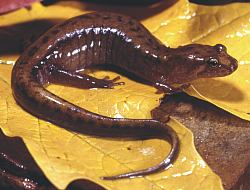 W
WThe Allegheny Mountain dusky salamander is a species in the Plethodontidae family. It is found in the eastern United States and southern Quebec, Canada. Its natural habitats are temperate forests, rivers, intermittent rivers, freshwater springs, and rocky areas.
 W
WThe Bibron's toadlet or brown toadlet is a species of Australian ground-dwelling frog that, although having declined over much of its range, is widespread through most of New South Wales, Victoria, south-eastern Queensland and eastern South Australia, including Kangaroo Island.
 W
WThe many-banded tree frog is a species of frog in the family Hylidae found in Brazil, French Guiana, Guyana, Suriname, and Venezuela. Its natural habitats are subtropical or tropical dry forests, subtropical or tropical moist lowland forests, moist savanna, rivers, freshwater lakes, freshwater marshes, pastureland, rural gardens, heavily degraded former forests, and canals and ditches.
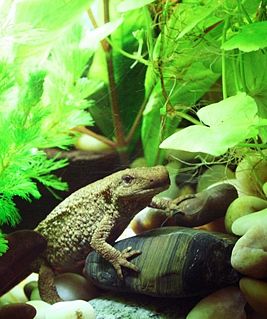 W
WThe Chinese warty newt is a species of salamander in the family Salamandridae. It is found only in China, with a range extending from Chongqing to Hunan, Anhui, Zhejiang, Fujian, Guangdong, and Guangxi Provinces in Central China. Its natural habitats are subtropical or tropical moist lowland forests, rivers, and freshwater marshes. It is threatened by habitat loss. Female Chinese warty newts reach total length of 151 mm (5.9 in), males are slightly shorter.
 W
WThe Colorado River toad, also known as the Sonoran Desert toad, is found in northern Mexico and the southwestern United States. Its toxin, as an exudate of glands within the skin, contains 5-MeO-DMT and bufotenin.
 W
WThe common Chinese tree frog (Chinese Traditional: 中國雨蛙 Chinese Simplified: 中国雨蛙 Pinyin: Zhōngguó yǔwā) is a species of frog in the family Hylidae found in southeastern and eastern China and in Taiwan. There is also one record from Vietnam but it is uncertain whether it really represents this species or Hyla annectans.
 W
WEleutherodactylus longipes is a species of frog in the family Eleutherodactylidae. It is endemic to Mexico and occurs on the Sierra Madre Oriental between central Nuevo León and adjacent Coahuila in the north and northern Hidalgo in the south. It is also known as the long-footed chirping frog and longfoot robber frog, among other names.
 W
WGeotrypetes seraphini, the Gaboon caecilian, is a species of amphibian in the family Dermophiidae. It is found in Cameroon, Democratic Republic of the Congo, Ivory Coast, Equatorial Guinea, Gabon, Ghana, Guinea, Liberia, Nigeria, Sierra Leone, and possibly Angola, and the Republic of the Congo. Its natural habitats are subtropical or tropical moist lowland forests, plantations, rural gardens, urban areas, heavily degraded former forests, and seasonally flooded agricultural land.
 W
WThe Japanese tree frog is a species of tree frog distributed from Hokkaidō to Yakushima in Japan and from Korea along the Ussuri River to north-eastern China, northern Mongolia, and the southern parts of the Russian Far East.
 W
WLeptodactylus albilabris is a species of frog in the family Leptodactylidae. Its local name is ranita de labio blanco or sapito de labio blanco and English name either Gunther's white-lipped frog or Hispaniolan ditch frog. It is found in Hispaniola, Puerto Rico, the British Virgin Islands, and the U.S. Virgin Islands.
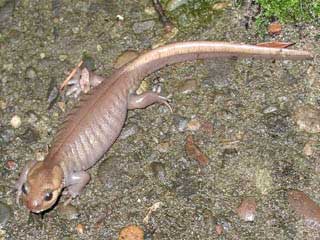 W
WThe northwestern salamander is a species of mole salamander that inhabits the northwest Pacific coast of North America. These fairly large salamanders grow to 8.7 in (220 mm) in length. It is found from southeastern Alaska on May Island, through Washington and Oregon south to the mouth of the Gulala River, Sonoma County, California. It occurs from sea level to the timberline, but not east of the Cascade Divide. Its range includes Vancouver Island in British Columbia and The San Juan Islands, Cypress, Whidbey, Bainbridge, and Vashon Islands in Washington.
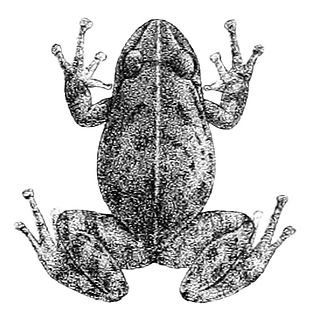 W
WPristimantis unistrigatus is a species of frog in the family Craugastoridae. It is found in the Andean valleys from southern Colombia to central Ecuador.
 W
WRhaebo caeruleostictus is a species of toad in the family Bufonidae. It is endemic to Ecuador and occurs along the lower western slope of the Cordillera Occidental at elevations of 40–2,000 m (130–6,560 ft) asl. The specific name caeruleostictus, from Latin caeruleus (=blue) and Greek stiktos (spotted), refers to the bluish colour pattern of this species. Accordingly, common name blue-spotted toad has been coined for it.
 W
WThe Rio Grande leopard frog is a species of aquatic frog native to the southern United States in Texas and New Mexico, and south through Mexico and Central America. It is also sometimes referred to as the Mexican leopard frog. The epithet berlandieri is in honor of the naturalist Jean Louis Berlandier, who worked for the Mexican government on one of the first biological surveys of Texas.
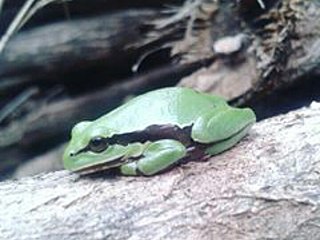 W
WThe southern highland tree frog is a species of frog in the family Hylidae endemic to Mexico. Its natural habitats are subtropical or tropical moist montane forests, subtropical or tropical high-altitude grassland, intermittent rivers, and intermittent freshwater marshes. It is threatened by habitat loss.
 W
WSpea hammondii, also known as the western spadefoot, western spadefoot toad, Hammond's spadefoot, or Hammond's spadefoot toad, is a species of amphibian in the family Scaphiopodidae. It is found in western California (USA) and northwestern Baja California (Mexico). The specific name hammondii is in honor of physician and naturalist William Alexander Hammond.
 W
WThe Sulawesian toad or Celebes toad is a species of toad in the family Bufonidae. It is endemic to Sulawesi, Indonesia. It is a common and abundant species found in a wide range of habitats, including primary rainforest, secondary forest, plantations, cultivated land and towns. Breeding takes place in ponds, paddy fields, and pools within slow-moving streams.
 W
WUperodon montanus, also known as Jerdon's narrow-mouthed frog, Jerdon's ramanella, mountain dot frog, mountain globular frog, or Malabar Hill frog, is a species of narrow-mouthed frog endemic to the Western Ghats of India.